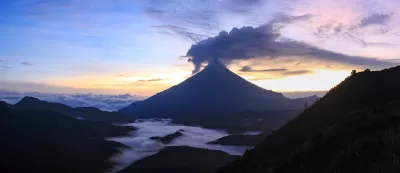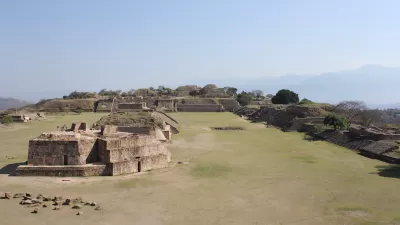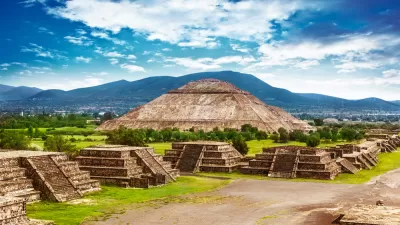An archaeological site shows evidence of a unique layout of dense residential buildings interspersed with a network of roads and farmland.

A set of newly unearthed ancient ruins reveal a unique style of ‘garden urbanism,’ writes Kiona N. Smith in Scientific American.
The site, in Ecuador’s Upano Valley, features “more than 6,000 earthen platforms that once supported houses and communal buildings in 15 urban centers, set amid vast tracts of carefully drained farmland and linked by a network of roads.” The layout is unique to Amazonia, with the nearest similar design seen in Central America.
According to Smith, “Nearly all the open space between communities would have been covered with hundreds of hectares of fields, bordered by shallow drainage ditches that fed into deeper canals. That close link between the fields and the urban centers of the Upano Valley is a unique hallmark of the landscape and the people who built it.” The site, known as Sangay, was likely built around 2,500 years ago.
Researchers say the Huapula, who still live in the region, moved into the site after it was abandoned between roughly 300 and 600 C.E. to take advantage of the existing infrastructure.
FULL STORY: Ancient Amazon Civilization Developed Unique Form of ‘Garden Urbanism’

Maui's Vacation Rental Debate Turns Ugly
Verbal attacks, misinformation campaigns and fistfights plague a high-stakes debate to convert thousands of vacation rentals into long-term housing.

Planetizen Federal Action Tracker
A weekly monitor of how Trump’s orders and actions are impacting planners and planning in America.

In Urban Planning, AI Prompting Could be the New Design Thinking
Creativity has long been key to great urban design. What if we see AI as our new creative partner?

King County Supportive Housing Program Offers Hope for Unhoused Residents
The county is taking a ‘Housing First’ approach that prioritizes getting people into housing, then offering wraparound supportive services.

Researchers Use AI to Get Clearer Picture of US Housing
Analysts are using artificial intelligence to supercharge their research by allowing them to comb through data faster. Though these AI tools can be error prone, they save time and housing researchers are optimistic about the future.

Making Shared Micromobility More Inclusive
Cities and shared mobility system operators can do more to include people with disabilities in planning and operations, per a new report.
Urban Design for Planners 1: Software Tools
This six-course series explores essential urban design concepts using open source software and equips planners with the tools they need to participate fully in the urban design process.
Planning for Universal Design
Learn the tools for implementing Universal Design in planning regulations.
planning NEXT
Appalachian Highlands Housing Partners
Mpact (founded as Rail~Volution)
City of Camden Redevelopment Agency
City of Astoria
City of Portland
City of Laramie





























